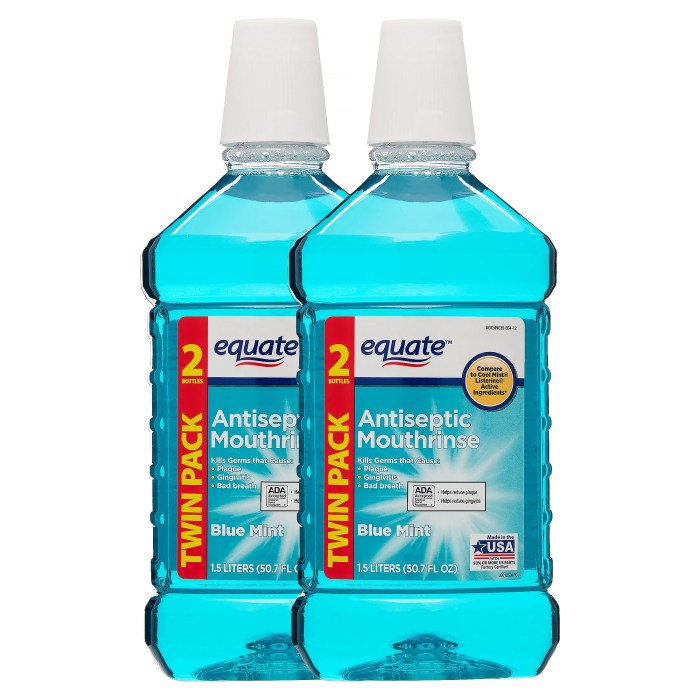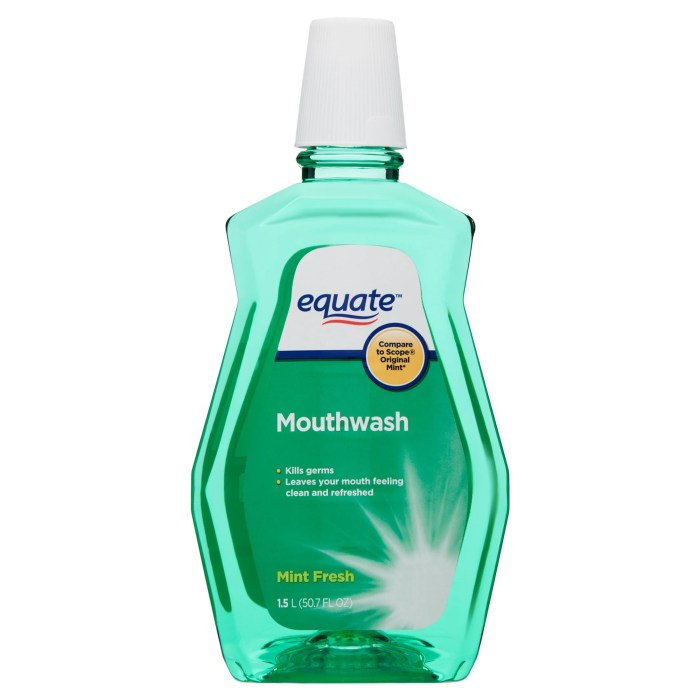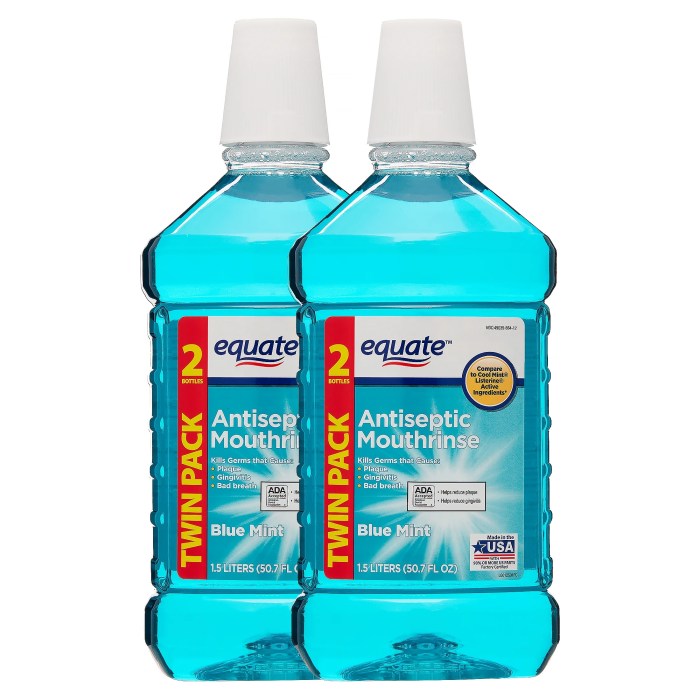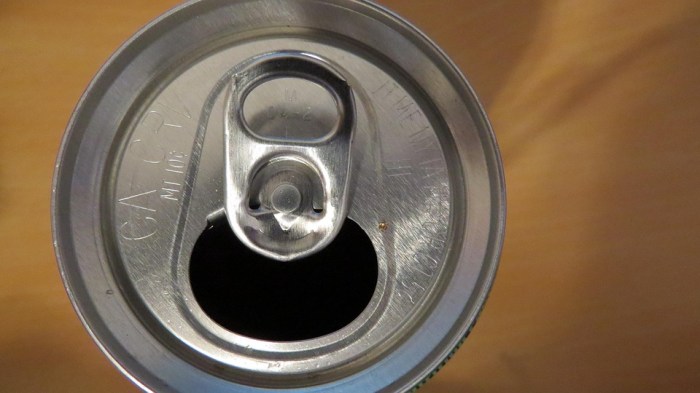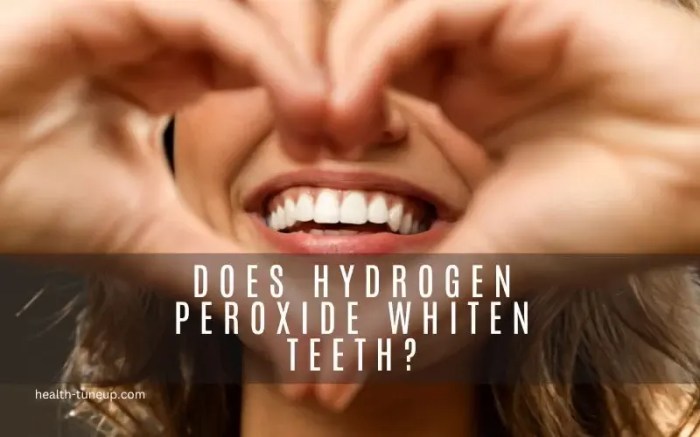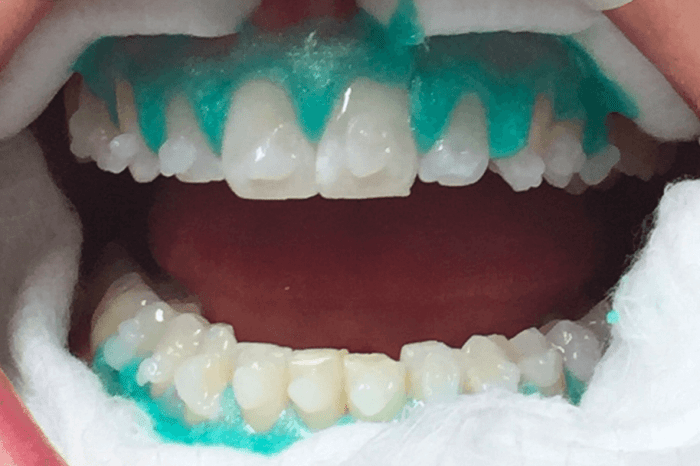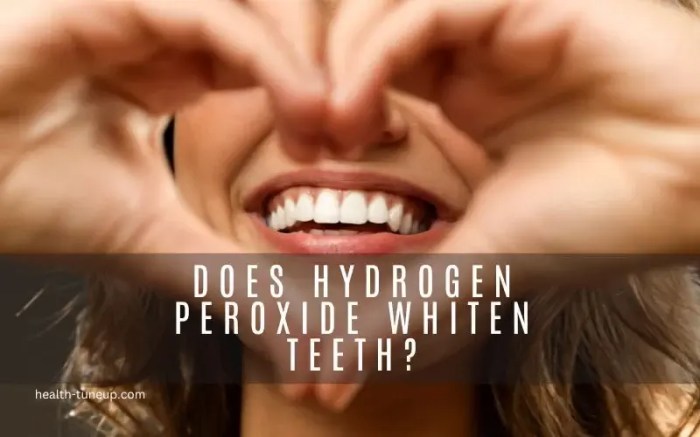Mouth and throat care after surgery is crucial for a smooth recovery. This guide provides essential information on managing pain, maintaining oral hygiene, and navigating dietary changes. Understanding the specifics of your procedure and following your doctor’s instructions is paramount to a successful healing process.
From immediate post-operative care to long-term monitoring, we’ll cover everything you need to know to care for your mouth and throat after surgery. We’ll explore various pain management techniques, dietary recommendations, and oral hygiene practices. This comprehensive guide will help you navigate this often-challenging period.
Initial Care s
Post-operative care for the mouth and throat is crucial for a smooth healing process. This involves meticulous attention to pain management, oral hygiene, and prevention of complications. Following a prescribed routine helps minimize discomfort and promotes the body’s natural healing abilities.
Immediate Post-Operative Routine
The first few days after surgery are critical. A dedicated routine for mouth and throat care is essential to prevent infection and promote healing. This includes frequent monitoring of the surgical area, pain management, and proper oral hygiene techniques.
Pain and Discomfort Management
Post-operative pain and discomfort are common. Various methods can help manage this. Over-the-counter pain relievers, as directed by your physician, can effectively reduce discomfort. Applying ice packs to the affected area can also provide temporary relief. It’s crucial to report any unusual or escalating pain to your healthcare provider.
Maintaining a Clean and Dry Surgical Area
Keeping the surgical site clean and dry is vital for preventing infection. Avoid touching the area directly, and use a soft, damp gauze to gently clean around the surgical site. Thorough handwashing before and after handling the surgical area is mandatory. It’s crucial to avoid vigorous rinsing or spitting, which can dislodge clots and potentially increase bleeding.
Proper Mouth and Throat Rinsing Technique
Gentle rinsing is an important aspect of post-operative care. Use a prescribed mouth rinse solution and a soft-bristled toothbrush to gently clean the surgical area. Avoid forceful rinsing, as this can dislodge blood clots. The rinsing should be done in a controlled manner to ensure it does not introduce further discomfort or complications.
Potential Complications and Actions
While rare, potential complications during the healing phase can occur. It’s important to recognize the signs and seek prompt medical attention. These may include increased pain, swelling, excessive bleeding, fever, or signs of infection (such as redness, pus, or foul odor). Always contact your healthcare provider if you experience any of these.
- Increased Pain: If pain intensifies beyond what is managed with prescribed medication, contact your physician immediately.
- Excessive Bleeding: Report any significant bleeding or persistent oozing to your healthcare provider immediately.
- Fever: A fever, accompanied by other symptoms, might indicate an infection. Seek medical attention promptly.
- Signs of Infection: Symptoms such as redness, swelling, pus, or a foul odor around the surgical site indicate a potential infection. Report these immediately.
Mouth Rinse Solution Comparison
Different mouth rinse solutions offer varying compositions and potential benefits. The table below summarizes common rinse solutions and their usage recommendations.
| Rinse Solution | Composition | Usage s | Precautions |
|---|---|---|---|
| Saline Rinse | Sterile saline solution | Gentle rinsing of the mouth and throat, several times a day. | Avoid using if allergic to sodium chloride. |
| Chlorhexidine Gluconate 0.12% | Antiseptic solution | Can be used to reduce bacteria, as directed by your physician. | May stain teeth; use as prescribed. |
| Hydrogen Peroxide (3%) | Oxidizing agent | May be used for cleaning, but only with strict instructions from your physician. | Can cause burning; use only as directed. |
Dietary Considerations
Post-surgery recovery often necessitates careful attention to your diet. Proper nutrition is crucial for healing and overall well-being. This section details the recommended dietary progression after surgery, focusing on the importance of soft, easily digestible foods.Dietary choices in the initial days following surgery play a vital role in minimizing discomfort and maximizing healing. The goal is to gradually introduce more solid foods as your body recovers.
This approach protects your throat and mouth from irritation, while ensuring adequate nutrient intake.
Recommended Dietary Progression
A gradual transition from liquid to solid foods is essential for post-surgical recovery. This approach minimizes the risk of complications, such as pain, discomfort, or difficulty swallowing. Starting with easily digestible liquids and progressively incorporating more solid foods is vital.
Importance of Soft, Easily Digestible Foods
Soft, easily digestible foods are crucial in the first few days after surgery. These foods are gentler on the healing tissues of the mouth and throat, minimizing discomfort and the risk of complications. They also aid in a smoother recovery process.
Examples of Appropriate and Inappropriate Foods
The first few days after surgery are dedicated to liquids and pureed foods. Appropriate foods include broth, smoothies, ice cream, and pureed fruits and vegetables. Foods like hard candy, crunchy vegetables, or spicy foods should be avoided as they can cause irritation and pain.
Gradual Introduction of Solid Foods and Signs to Watch For
As your recovery progresses, you can gradually introduce more solid foods. Start with soft foods like mashed potatoes, yogurt, or applesauce. Pay close attention to how your body reacts to each new food. Signs that indicate you might need to return to a softer diet include pain or discomfort when swallowing, nausea, or difficulty chewing.
Sample Dietary Plan for the First Week Post-Surgery
| Day | Food Category | Examples |
|---|---|---|
| Day 1 | Liquid | Broth, Smoothies, Ice Cream |
| Day 2 | Pureed | Pureed Vegetables, Fruits |
| Day 3 | Soft | Mashed Potatoes, Yogurt, Applesauce |
| Day 4 | Soft | Scrambled eggs, Soft pasta, Fish |
| Day 5 | Soft | Soups, Steamed vegetables, Mashed beans |
| Day 6-7 | Solid | Regular meals (gradually introduce different textures), avoiding hard or chewy foods |
Potential Problems of Eating Too Quickly or Too Hard
Eating too quickly or consuming hard foods can put undue stress on the healing tissues in your mouth and throat. This can lead to pain, discomfort, and even complications. Chewing thoroughly and taking small bites will help prevent these issues. It is crucial to avoid foods that require significant chewing, as they can cause unnecessary strain on the recovery process.
Oral Hygiene Practices
Maintaining meticulous oral hygiene after surgery is crucial for preventing complications and promoting healing. A proper oral care routine helps to minimize the risk of infection, discomfort, and potential delays in the recovery process. It is essential to follow your surgeon’s specific instructions and adapt your routine to your individual needs.Oral hygiene post-surgery is not just about keeping your teeth clean; it’s about protecting the surgical site and ensuring overall comfort.
This involves careful brushing, flossing, and cleaning the surgical area, all tailored to your specific situation. The goal is to prevent the buildup of bacteria and food particles, which can lead to inflammation, pain, and potentially serious complications.
Importance of Oral Hygiene Post-Surgery
Thorough oral hygiene is paramount in the healing process after any surgical procedure. A clean mouth helps to prevent the development of infections and keeps the surgical site free from irritants. This significantly reduces discomfort and accelerates the healing process, allowing for a quicker return to normal activities. By maintaining a hygienic oral cavity, patients contribute to overall well-being and recovery.
Safe Brushing Techniques
For the first few days post-surgery, soft-bristled toothbrushes are recommended. Using a toothbrush with extra-soft bristles helps prevent further irritation to the surgical area. Gently brush your teeth in small, circular motions, avoiding the surgical site until it is completely healed. Be cautious not to apply excessive pressure, and use a fluoride toothpaste as recommended by your dentist.
Flossing Techniques Post-Surgery
Flossing is equally important for maintaining oral hygiene. However, it’s crucial to adapt your technique to the surgical area. If possible, use floss designed for sensitive gums or use a water flosser, as these options provide a gentle alternative for cleaning between teeth without causing further irritation. Be careful not to press too hard or apply force near the surgical site.
Cleaning the Surgical Area
Cleaning the surgical area is critical for preventing infection. Use a soft-bristled brush or a clean gauze pad soaked in a saline solution to gently cleanse the area. Follow the surgeon’s instructions for the specific cleaning procedure, including frequency and duration. Avoid harsh scrubbing or using abrasive materials that may irritate the area. Apply gentle pressure and focus on removing any food particles or debris.
Oral Hygiene Schedule
A consistent schedule for oral hygiene maintenance is crucial for optimal healing. Start with gentle cleaning immediately after waking up and before bedtime. After meals, rinse your mouth with a prescribed mouthwash or saline solution. As your surgical site heals, you can gradually increase the frequency and intensity of your brushing and flossing routine, always in consultation with your healthcare provider.
If any discomfort or pain arises, contact your healthcare provider immediately.
| Time | Activity |
|---|---|
| Morning | Gentle brushing and rinsing |
| Afternoon | Rinse mouth after meals |
| Night | Thorough brushing and flossing |
Preventing Dry Mouth
Dry mouth, or xerostomia, is a common side effect of some medications and can also occur post-surgery. It can increase the risk of cavities and oral infections. To maintain oral moisture, sip on water frequently, especially after meals and during the day. Chewing sugar-free gum or sucking on sugar-free candies (as prescribed by your healthcare provider) can also help stimulate saliva production.
Use a humidifier in your room to increase the moisture in the air.
Oral Hygiene Tools Comparison
Various oral hygiene tools are available. Soft-bristled toothbrushes are ideal for the initial days post-surgery. Water flossers are a gentle alternative to traditional floss. Mouthwashes, especially those containing chlorhexidine, can help reduce bacteria, but use them as directed by your doctor. The effectiveness of each tool depends on the individual’s needs and the specific surgical procedure.
Your dentist or healthcare provider can advise you on the most suitable tools for your situation.
Pain Management and Medication
Managing post-surgical mouth and throat pain is crucial for a smooth recovery. Effective pain management allows you to eat, drink, and maintain good oral hygiene, all vital for healing. This section Artikels various methods for controlling pain, including medications and alternative remedies.Pain after surgery can vary in intensity and duration. Understanding different pain management strategies empowers you to actively participate in your recovery process and ensure comfort.
Taking care of your mouth and throat after surgery is crucial for a speedy recovery. While focusing on soft foods and avoiding harsh spices is important, it’s also worth considering potential allergic reactions. For example, if you have a nut allergy, certain spices can cross-contaminate and trigger a reaction, like those discussed in this informative guide on spices to avoid with nut allergy.
So, sticking to a bland diet and avoiding potential irritants is key for optimal mouth and throat healing.
Pain Relief Methods
Effective pain management involves a multifaceted approach, combining medication with alternative techniques. This section explores several strategies to alleviate discomfort and promotes a faster recovery.
Common Pain Medications
A variety of over-the-counter and prescription medications can help manage post-surgical pain. It’s essential to follow your doctor’s instructions regarding dosage and frequency.
- Acetaminophen (Tylenol): A common over-the-counter pain reliever, often recommended for mild to moderate pain. Typical dosages range from 500 to 1000 milligrams every four to six hours, as needed. Consult your doctor for specific instructions, particularly if you have underlying health conditions.
- Ibuprofen (Advil, Motrin): Another over-the-counter nonsteroidal anti-inflammatory drug (NSAID) used for pain and inflammation. Usual dosages range from 200 to 400 milligrams every four to six hours. It’s essential to note that NSAIDs can have potential gastrointestinal side effects, so use caution and discuss with your doctor if you have stomach problems.
- Prescription Narcotics (e.g., Codeine, Oxycodone): In cases of severe pain, prescription narcotics might be necessary. These medications are potent and carry potential side effects, including drowsiness and constipation. Always take these medications exactly as prescribed, and never share them with others.
Importance of Adhering to the Medication Regimen
Following your prescribed medication regimen is crucial for effective pain control and minimizing potential complications. Consistency in taking medications as directed ensures a steady level of pain relief and promotes healing.
Signs of Adverse Reactions
Be vigilant about recognizing potential adverse reactions to pain medications. Early detection allows for prompt medical intervention.
- Allergic Reactions: Symptoms may include hives, swelling, difficulty breathing, or a rash. Seek immediate medical attention if you experience these.
- Gastrointestinal Issues: Some medications can cause nausea, vomiting, or stomach upset. If these problems persist, consult your doctor.
- Drowsiness or Dizziness: Medications can cause drowsiness or dizziness, which could affect your ability to perform daily tasks. Be cautious when performing activities requiring alertness.
Alternative Pain Relief Methods
Beyond medication, alternative methods can complement your pain management plan.
- Ice Packs: Applying ice packs to the affected area can help reduce swelling and inflammation. Wrap the ice pack in a thin cloth to prevent direct skin contact.
- Mouthwashes: Using a salt water mouthwash can help soothe sore throats and reduce inflammation. Mix one-half teaspoon of salt in eight ounces of warm water. Gently swish the solution in your mouth for 30 seconds.
Comparison of Pain Relief Methods
The following table compares various pain relief methods based on their effectiveness, advantages, and disadvantages.
| Method | Description | Advantages | Disadvantages |
|---|---|---|---|
| Acetaminophen | Over-the-counter pain reliever | Generally safe, effective for mild to moderate pain | May not be effective for severe pain, can cause liver problems with overuse |
| Ibuprofen | Over-the-counter NSAID | Effective for pain and inflammation, potentially faster relief | Potential for stomach upset, can interact with other medications |
| Prescription Narcotics | Stronger pain relievers | Effective for severe pain | Potentially addictive, significant side effects (drowsiness, constipation) |
| Ice Packs | Reduces swelling and inflammation | Simple, readily available, relatively inexpensive | Temporary relief, may not be sufficient for severe pain |
| Saltwater Mouthwash | Soothes sore throats and reduces inflammation | Natural, safe, easy to prepare | Limited pain relief, may not be effective for all types of mouth/throat pain |
Monitoring and Follow-up
Your journey to recovery after surgery involves more than just the initial care. A crucial aspect is ongoing monitoring and follow-up, ensuring a smooth transition back to health and preventing potential complications. This period allows your healthcare team to track your progress, address any concerns, and make necessary adjustments to your care plan.Regular check-ups are essential for detecting and managing any potential issues early on.
They also provide an opportunity to discuss any questions or concerns you might have, promoting a collaborative approach to your recovery.
Importance of Regular Follow-up Appointments
Regular follow-up appointments are vital for successful recovery. These appointments allow your healthcare provider to assess your healing process, evaluate the effectiveness of treatment, and identify any potential problems early on. This proactive approach minimizes the risk of complications and ensures optimal outcomes. Missed appointments can delay or hinder your recovery, potentially leading to complications that could have been prevented with timely intervention.
Taking care of your mouth and throat after surgery is crucial. You might be surprised at how much your diet and oral hygiene impact healing. For example, dealing with a pesky lip pimple can be a real pain, especially when you’re recovering from surgery. Check out this helpful guide on how to get rid of a pimple on lip for some soothing tips.
Remember, proper mouth and throat care is key to a speedy recovery, so stick to soft foods and gentle rinses as recommended by your doctor.
Monitoring for Signs of Infection or Complications
Post-operative infections and complications are serious concerns. Your healthcare team will monitor for any signs of infection, including fever, increased pain, redness, swelling, or drainage from the surgical site. They will also closely observe for complications such as bleeding, difficulty swallowing, or changes in your overall condition. Regular monitoring allows for prompt intervention if any of these signs arise.
For example, a patient who experiences a fever and increased pain at the surgical site after discharge might require a visit to the clinic for antibiotic treatment and a re-evaluation of the healing process.
Taking care of your mouth and throat after surgery is crucial for healing. It’s important to avoid foods and drinks that could irritate the area, and this includes considering the potential impact of temperature on your recovery. For example, you might wonder if drinking cold water is really that bad for you. Is drinking cold water bad for you ?
While some people might feel it’s not a problem, it’s best to stick to room temperature or slightly warm liquids for a few days post-surgery to avoid discomfort. This will help promote faster healing and prevent any complications.
Addressing Persistent Pain, Swelling, or Difficulty Swallowing
Persistent pain, swelling, or difficulty swallowing after surgery should be reported immediately to your healthcare provider. These symptoms could indicate an underlying problem that needs further investigation and treatment. Early intervention can often prevent the issue from worsening. For example, a patient experiencing persistent difficulty swallowing could require a referral to a speech therapist for guidance on exercises to improve the swallowing mechanism and avoid complications from malnutrition.
Potential Warning Signs Requiring Immediate Medical Attention
Recognizing potential warning signs is critical for prompt medical intervention. These include, but are not limited to, high fever, severe pain, excessive bleeding, difficulty breathing, rapid pulse, signs of infection at the surgical site, or a change in mental status. It is important to contact your healthcare provider immediately if you experience any of these symptoms. Knowing the warning signs and promptly reporting them can be life-saving in some cases.
Role of the Healthcare Provider in Managing Post-Operative Recovery
Your healthcare provider plays a central role in managing your post-operative recovery. They will closely monitor your progress, adjust treatment plans as needed, and provide guidance and support throughout the healing process. They will also address any concerns or questions you may have, ensuring a supportive and informed recovery experience. They may recommend additional tests, therapies, or medications to optimize your recovery.
Steps to Take if You Have Questions or Concerns After Discharge
If you have questions or concerns after discharge, do not hesitate to contact your healthcare provider. You can reach them through phone calls, email, or by scheduling a follow-up appointment. This proactive approach allows your provider to address your concerns promptly and ensure your continued well-being. Communicating openly with your healthcare team is essential for a smooth and successful recovery.
Preventing Infection

Post-surgical recovery is a delicate process, and preventing infection is paramount to a smooth and speedy healing journey. A healthy mouth and throat are essential for overall well-being, and protecting them from infection after surgery is crucial for avoiding complications and discomfort. Maintaining meticulous hygiene and understanding the potential warning signs are key components of this preventative approach.Infection after surgery can delay healing, cause pain, and potentially lead to more serious complications.
Taking proactive steps to minimize the risk of infection is a vital part of the recovery process, focusing on both the immediate post-operative period and the longer-term maintenance of oral health.
Importance of Good Hygiene and Oral Care
Maintaining meticulous oral hygiene is critical in preventing infection. A clean mouth and throat reduce the environment conducive to bacteria and fungi growth. Regular, gentle brushing and rinsing with antiseptic mouthwash help remove food particles and plaque, minimizing the potential for infection.
Strategies for Avoiding Infection
A multifaceted approach is essential to avoid infection. Avoiding smoking and alcohol consumption is crucial, as these substances can impair the healing process and weaken the immune system. Maintaining good oral hygiene, including regular brushing and rinsing with antiseptic mouthwash, is paramount. Staying well-hydrated by drinking plenty of fluids helps keep the mouth moist and reduces the risk of dryness, which can also contribute to infection.
Signs of Infection to Watch Out For
Prompt recognition of infection symptoms is essential for timely intervention. Symptoms to watch for include persistent pain, swelling, redness, pus, unusual discharge, fever, or a bad taste or odor in the mouth. If any of these signs arise, it’s vital to contact your healthcare provider immediately. Early detection and treatment can significantly reduce the severity and duration of an infection.
Importance of Avoiding Smoking and Alcohol
Smoking and alcohol consumption significantly hinder the healing process and increase the risk of infection. Nicotine and alcohol impair blood flow and tissue regeneration, making the mouth and throat more susceptible to infections. Quitting smoking and avoiding alcohol, even temporarily, can significantly enhance the healing process. The benefits of abstaining are well-documented, and their impact on infection risk is a critical factor in post-surgical recovery.
Strategies to Maintain a Healthy Immune System
A strong immune system is the body’s first line of defense against infection. Maintaining a balanced diet rich in fruits, vegetables, and protein, getting adequate sleep, and managing stress are all vital to a healthy immune system. Maintaining a healthy lifestyle, including regular exercise, can further support the immune system. Adequate rest and nutrition contribute significantly to immune function, enabling the body to fight off potential infections more effectively.
Specific Procedures and Considerations: Mouth And Throat Care After Surgery
Post-operative care for mouth and throat surgeries varies significantly depending on the specific procedure. Understanding the type of surgery, the surgical technique, and any underlying health conditions is crucial for effective post-operative management. This section delves into the specifics of various procedures, highlighting the nuances in care and the importance of following your surgeon’s instructions.Surgical procedures affecting the mouth and throat encompass a broad spectrum, from routine extractions to complex reconstructive surgeries.
Each procedure necessitates a tailored approach to post-operative care, emphasizing pain management, oral hygiene, and infection prevention. The details of the surgical technique directly influence healing timelines and potential complications, demanding careful consideration and diligent adherence to prescribed guidelines.
Types of Mouth and Throat Surgeries
Various surgical procedures can affect the mouth and throat. Understanding the type of surgery helps determine the appropriate post-operative care. Examples include:
- Dental Extractions: Simple extractions generally require minimal post-operative care, focused on managing any discomfort and preventing infection. Post-operative instructions usually include avoiding strenuous activity, maintaining good oral hygiene, and reporting any concerning symptoms.
- Oral Cancer Surgeries: These procedures can involve a wide range of approaches, from tissue biopsies to complete removal of cancerous tissue, often with reconstructive surgery. Care focuses on managing pain, controlling swelling, and preventing infection, potentially including nutritional support and rehabilitation.
- Tonsillectomy and Adenoidectomy: These procedures, often performed on children and adolescents, involve the removal of tonsils or adenoids. Post-operative care centers around managing pain, monitoring for bleeding, and ensuring adequate hydration. A soft diet is typically prescribed.
- Reconstructive Jaw Surgeries: These procedures aim to correct structural defects in the jaw or face. Post-operative care may involve specialized protocols to support bone healing and proper jaw alignment, potentially including immobilization and specific dietary restrictions.
- Surgical Procedures for Oropharyngeal Dysphagia: These procedures target disorders that cause difficulties in swallowing. Post-operative care may include swallowing exercises, dietary modifications, and potential speech therapy, alongside the usual pain and infection management.
Surgical Techniques and Implications for Healing, Mouth and throat care after surgery
The method of surgical intervention significantly impacts the healing process. Different techniques involve varying levels of tissue manipulation and trauma, which, in turn, influence the expected healing time.
- Laser Surgery: Laser techniques can offer less invasive approaches to various oral and throat conditions. The reduced tissue trauma often leads to quicker healing and less post-operative pain compared to traditional methods. Specific post-operative instructions might vary based on the procedure and the laser’s characteristics.
- Minimally Invasive Techniques: These techniques, such as endoscopic procedures, aim to minimize surgical incisions. Reduced trauma can translate to faster recovery, with post-operative care focusing on the smaller, localized area of intervention.
- Open Procedures: More extensive surgeries may involve larger incisions. Post-operative care will need to address potential complications from the larger area of intervention, including managing pain, controlling swelling, and preventing infection.
Special Considerations for Patients with Underlying Health Conditions
Patients with pre-existing medical conditions require individualized post-operative care. Certain medications, chronic diseases, or immune deficiencies may influence healing and necessitate extra precautions.
- Diabetes: Patients with diabetes may experience delayed wound healing and increased susceptibility to infections. Post-operative care should include diligent monitoring of blood sugar levels and prompt management of any complications.
- Blood Clotting Disorders: Individuals with bleeding or clotting disorders require careful monitoring for excessive bleeding and potential hematomas. Post-operative care may involve specific precautions, such as administering blood thinners or using compression dressings.
- Immune Compromised Patients: Patients with weakened immune systems are at higher risk of infection. Post-operative care should include aggressive infection prevention strategies and close monitoring for signs of infection.
Importance of Following Surgeon’s Instructions
Adherence to the surgeon’s post-operative instructions is essential for a smooth recovery and to prevent complications. The specific instructions are tailored to the individual procedure and patient’s needs.
“Following your surgeon’s instructions is paramount to successful healing and recovery.”
Post-Operative Care for Patients with Specific Medical Needs
Tailoring post-operative care for patients with specific medical needs is vital. This may include dietary modifications, specialized pain management, and close monitoring for complications.
- Patients with Difficulty Swallowing: Patients with swallowing difficulties may require a modified diet to prevent aspiration and promote comfort. Post-operative care should include nutritional counseling and guidance on safe swallowing techniques.
- Patients on Blood Thinners: Patients taking blood thinners may require specific instructions regarding activity levels and the use of certain medications to prevent bleeding complications.
Last Point

In conclusion, proper mouth and throat care after surgery is vital for a swift and comfortable recovery. Remember to prioritize oral hygiene, carefully follow your doctor’s instructions, and listen to your body. A proactive approach to pain management and dietary adjustments, combined with regular monitoring, can significantly contribute to a positive outcome. This guide has provided a comprehensive overview, but your healthcare provider is your most important resource.

